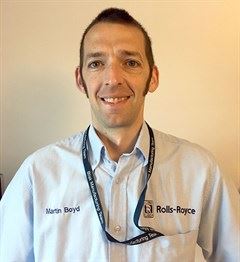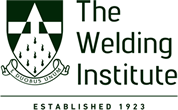- Home
- Membership & Registration
- Case Studies
- Martin Boyd
Mr Martin Boyd BEng IEng MWeldI
|
|
 Career Background
Career Background
As a welding specialist, 36-year-old Martin began his career after achieving a BEng in Materials Engineering from Loughborough University. Starting work for AWE in 2003 as a graduate in the Applied Materials group, two years later, in 2005, he had moved to the Joining Development Section as a Joining Specialist. While there, he focused on electron beam welding as well as TIG and high frequency induction brazing. Although Martin says his work there included some ‘very interesting projects in support of the UK Nuclear Deterrent,’ he was soon on the move again, joining Rolls-Royce in 2011.
Manufacturing Engineer - Welding Specialist, Rolls-Royce Plc.
Derby-based Manufacturing Engineer, Martin Boyd has been working for Rolls-Royce for 6 years, where he is a technical specialist for a team of twelve welding coordinators and engineers, and around eighty welders across 5 different manufacturing sites.
Rolls-RoyceBeginning his work with Rolls-Royce as a Manufacturing Engineer for electron beam welding, covering the manufacture of critical rotating parts for the Aerospace industry, he also became an Industrial Mentor to a Core Research Programme at TWI. Becoming an IEngWhile Martin was a graduate member of The Welding Institute for a number of years, he decided to take the plunge and apply to become a Member and an Incorporated Engineer (MWeldI IEng). This was spurred by the fact that he was set to change jobs at Rolls-Royce and felt that it was ‘an ideal time to apply’ before his new role began. Rolls-Royce, who covered all the applicable fees for the professional registration and gave Martin the time he needed to attend his professional review interview, supported the application. Meanwhile, he received extra encouragement in his application from a colleague who is a Chartered Engineer and Member (CEng MWeldI) as well as ‘gentle persuasion’ from members of his local Welding Institute branch! As for the process itself, Martin submitted his CV to the Professional Membership Office at The Welding Institute, who were then able to advise which grade would be most suitable. From here, Martin emailed the relevant checklists and application form, but since he already held an accredited degree, Martin said that the process was ‘fairly straight-forward.’ In fact, the process of gaining his professional registration as an IEng was so easy that Martin advises others who may be thinking about a similar path to just ‘get on with it,’ adding, ‘I put it off for many years as I had a preconception that it would be very difficult. When I finally got round to it, in reality, it was straight-forward.’ |
The benefits of professional registrationBecoming an IEng has helped both Martin’s own career and also benefited his employer, as he explained, saying that it has helped him to demonstrate his professional competence while also showing external suppliers that he is suitably experienced and qualified. But, what of the future?Martin concluded that he is hoping to take things further, revealing, ‘I hope to apply for CEng later this year and develop as a technical specialist within Rolls-Royce, gaining internal and external recognition within the welding and joining industry.’ |

.png)